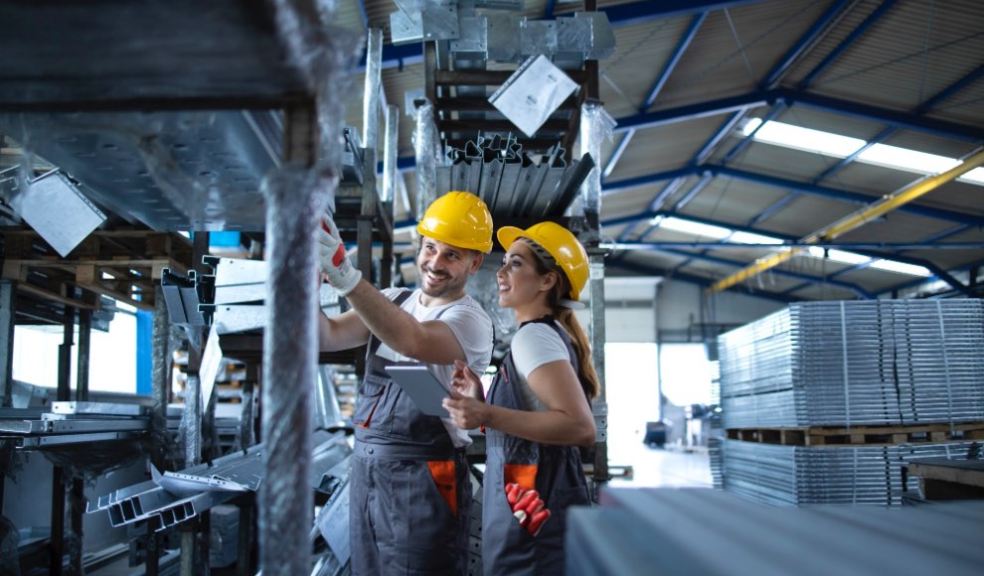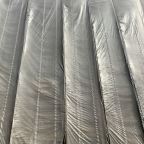
The Birth Of A Shape, From Hand To Machine
From the very first moment a human struck flint against stone, the world began to take shape, quite literally. Every era of civilization has been defined not just by what we thought, but by what we could form. Our actions. Thus, the chipped edge of a prehistoric tool, the curvature of a Grecian amphora, and the ribbed shell of an aircraft fuselage are all monuments to the same question:
How do we turn imagination into an object?
The story of human progress, as well as of this article, is, in essence, the story of shaping. First by hand, then by hammer, and now by algorithm, we, humans, have ceaselessly refined our dialogue with matter. During the Industrial Revolution, that dialogue grew mechanical; maybe you already knew that, but still, it is worth reinforcing. In those times, form was no longer an expression of a craftsman’s individuality but a triumph of replication. The twentieth century, in turn, ushered in a new protagonist, one we are all quite acquainted with: plastic. It liberated design from the constraints of metal and stone, allowing objects to multiply, travel, and evolve with unprecedented speed. That we called freedom.
Yet the rise of plastics also demanded a new artistry, not of the sculptor, but of the engineer. This is where injection moulding emerged as the defining method of modern form-making. Instead of chiseling away at matter, we began to sculpt through absence, a hollow cavity into which liquid material flows, cools, and solidifies into precision. In this shift, the mould became the modern hand, particularly injection moulding large plastic products. And today, this ancient human instinct, to imagine and to give form, has evolved into a science of extraordinary sophistication. Specialists in the development and manufacturing of large plastic products, housings, and shaped components stand at this frontier. They embody the latest chapter in our centuries-long pursuit to bridge creativity with precision, thought with object, idea with shape.
Now that everyone is aligned with the premise of this piece and the intentions that underpin it, we can turn our attention to the subtleties. Each era holds its own story, not a matter of trivial spectacle or gossip, but a narrative of relevance, one that quietly informs the structures, privileges, and perspectives we take for granted today.
The Hand As The First Mould
Before machines, before molds, measurement, and all of that stuff, there was the human hand, the first true instrument of design. Here, every early object bore the intimate trace of touch, shaped by intuition rather than instruction. The hand was both tool and thinker, translating intentions, be it ordinary or abstract, into tangible form. Through it, clay became a vessel, fiber became a thread, and metal took shape as an ornament or weapon. Through the hand, yes. This direct relationship between maker and material defines the essence of craftsmanship, which tells us presence is way more important than perfection could ever be. The hand established the rhythm of creation long before standardization and automation, and we are not romanticizing. The hand really did represent a dialogue, between body and mind, matter and imagination. We have been robbed of this in many ways.
The Age Of Industry
If we had to describe the Industrial Revolution in one word, it would be mechanization. The Industrial Revolution, beginning in the late 18th century, transformed production on an unprecedented scale, commonly regarded as the process in which the agrarian and handcrafted economy shifted to a regime dominated by industry and machine manufacturing. Steam engines powered textile mills, mechanized looms replaced handweaving, and iron foundries produced standardized components. Factories enabled the mass production of goods like clocks, machinery, and clothing, dramatically reducing cost and increasing availability. This shift also introduced specialization, and workers performed repetitive tasks, while inventors and engineers designed machinery to replicate their actions more efficiently. Innovations such as James Watt’s steam engine and Henry Maudslay’s screw-cutting lathe exemplify the era’s combination of mechanical ingenuity and industrial scalability. The result was a world where objects could be produced quickly and consistently, ultimately laying the groundwork for the modern economy.
The Era Of Plastic And Precision
The 20th century marked a radical transformation in materials and manufacturing. Plastic, first mass-produced with Bakelite in the early 1900s, became a versatile, lightweight, and durable medium. With the advent of injection molding, manufacturers could now create large plastic products with consistent shape and strength, from automotive dashboards to household appliances, on a scale and speed previously unimaginable. Combined with precision engineering, computer-aided design (CAD), and automated assembly lines, this era enabled the near-perfect replication of parts, revolutionizing industries from consumer goods to electronics and medical devices. While this might have raised enduring questions about sustainability, relevant info from https://www.hsv-tmp.com/, a qualified entity in plastic injection moulding of large products, suggests that responsible individuals can anytime opt for sustainable injection moulding, at least in what concerns their services. From energy to the assembly of your product and the materials incorporated, they have honed a distinctive niche in which sustainability is the guiding principle.
The Shape Of The Future
It’s true, we all wonder what the future looks like. We think about it so much that we forget to enjoy the journey. The final destination becomes all we care about, only to arrive and find there is nothing left to drink except our own blood. Now, you may be wondering what that even means on Earth. Well, the thing about being at the top is that sometimes it mirrors our relationship with physical affection. We crave it, we beg for it, we are ready to sell our souls for it, but only when it is out of reach. When we finally have it, continuously bathing in the most exquisite of experiences, blood suddenly seems more attractive. Because it is not the usual. We despise the usual. At the top, all one thinks about is how not to fall, because there is nothing beyond it. In the best-case scenario, we find a person, and everything we do becomes a love letter. But not everyone is that fortunate.
Anyways, just as we keep thinking about the future in terms of success, we do the same with the manufacturing industry. We cannot wait to see what AI and 3D machines will do for it. We imagine all sorts of scenarios, place bets, daydream about changing the world, or at least about anticipating the future, because there is pure rage in failing to see what is coming next, especially when you could have foreseen it and acted on it yourself. Calm down a little. Maybe one day you will even miss the era of plastic and precision.
Image: https://www.freepik.com











